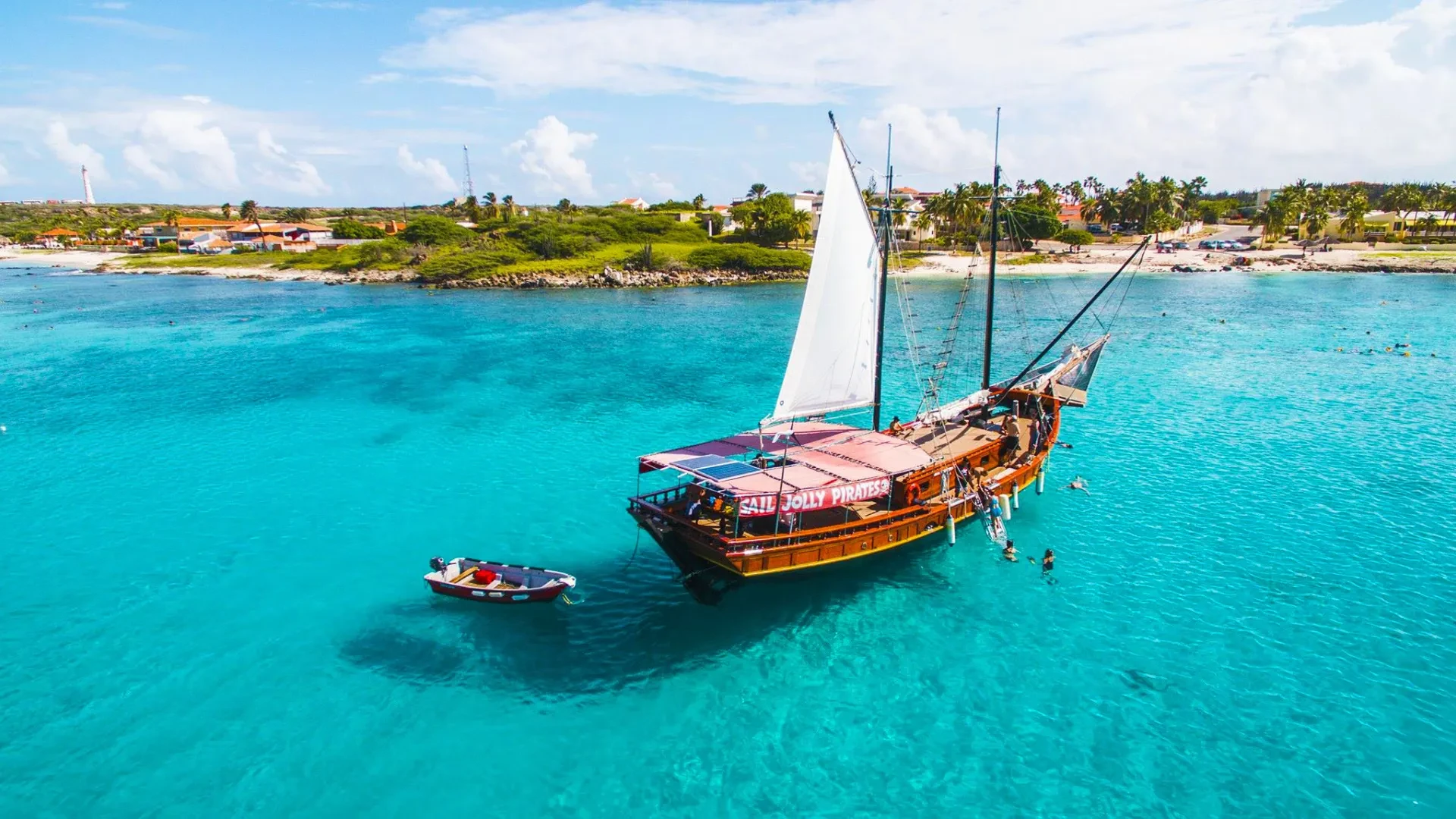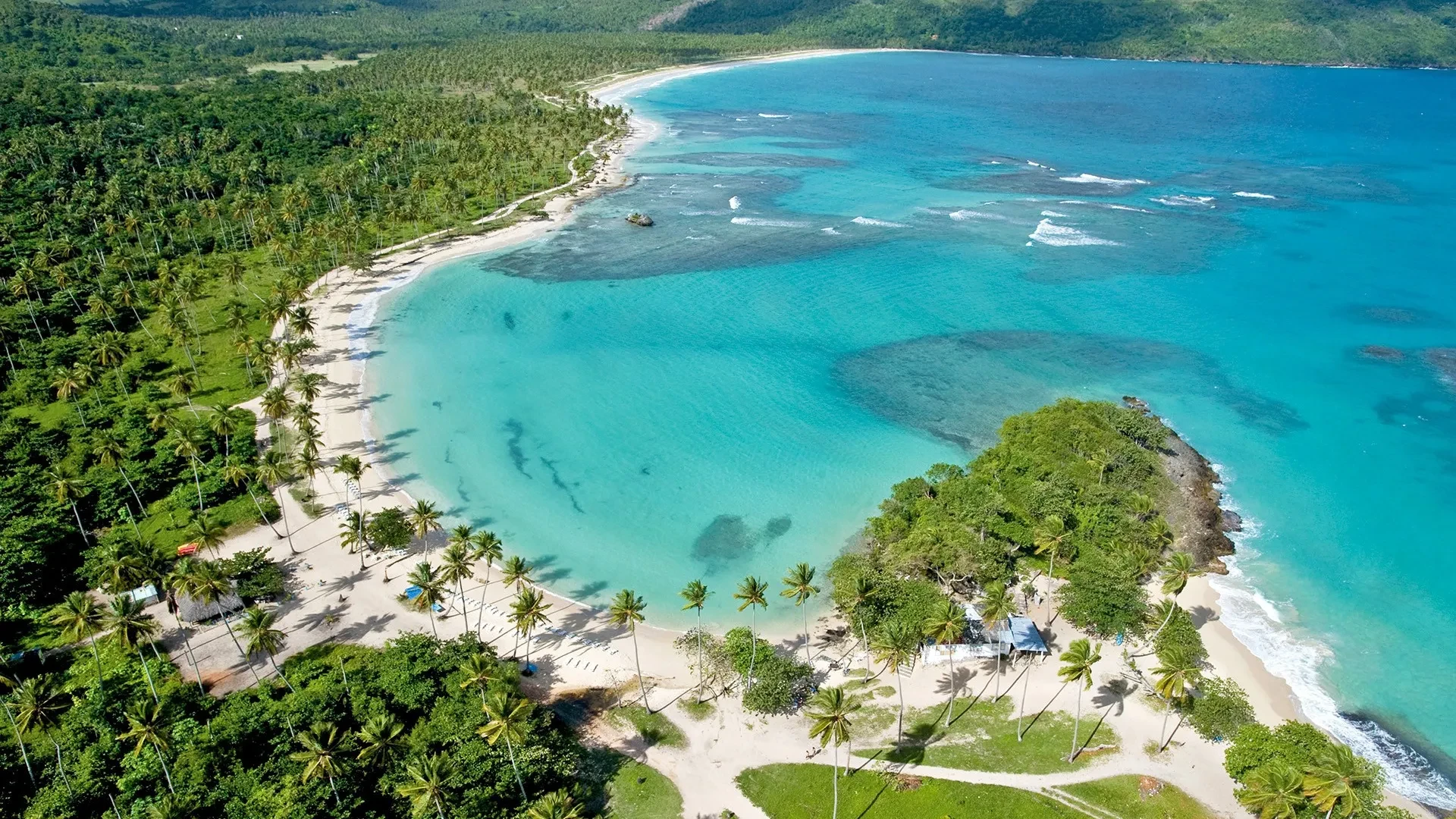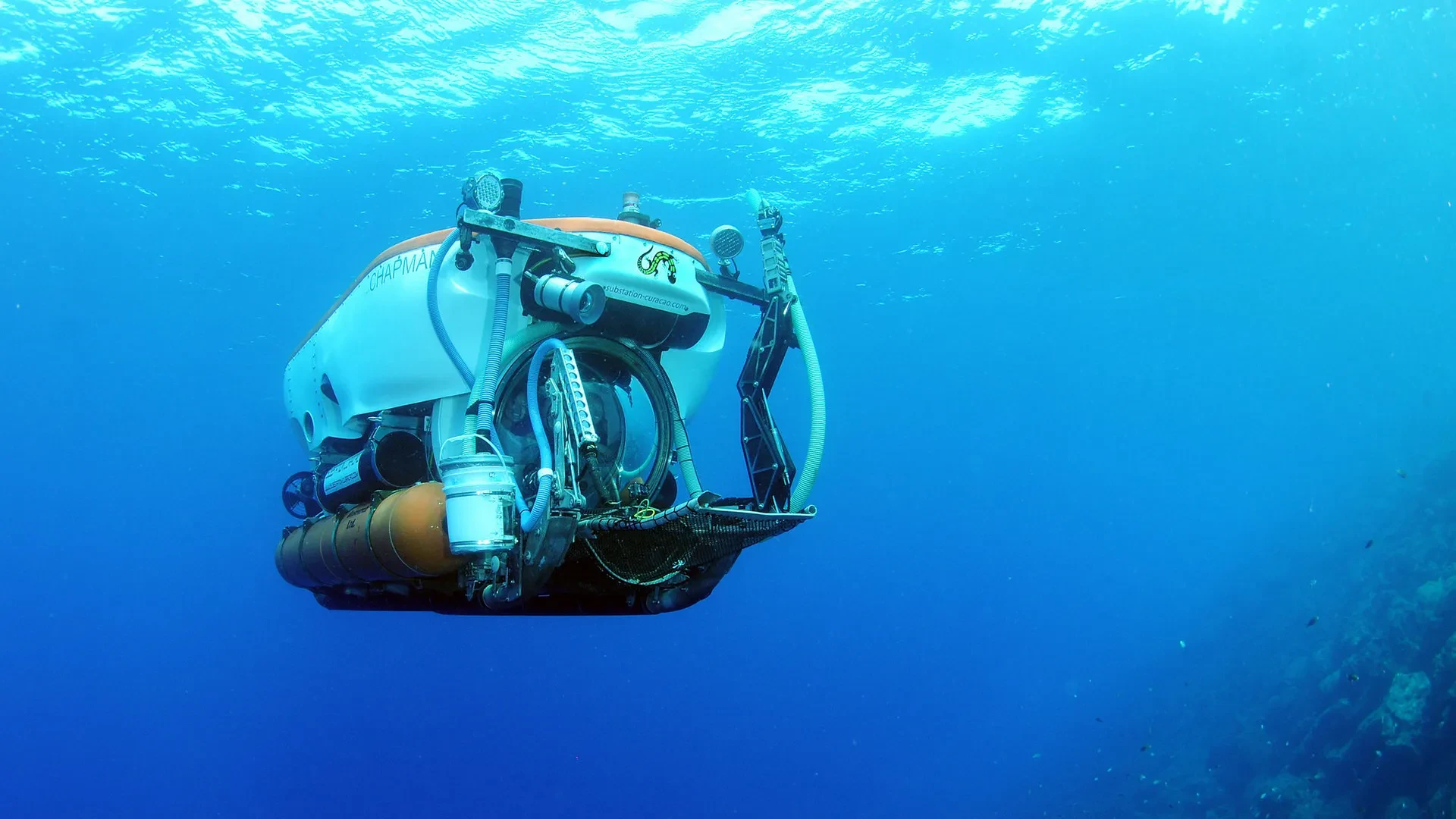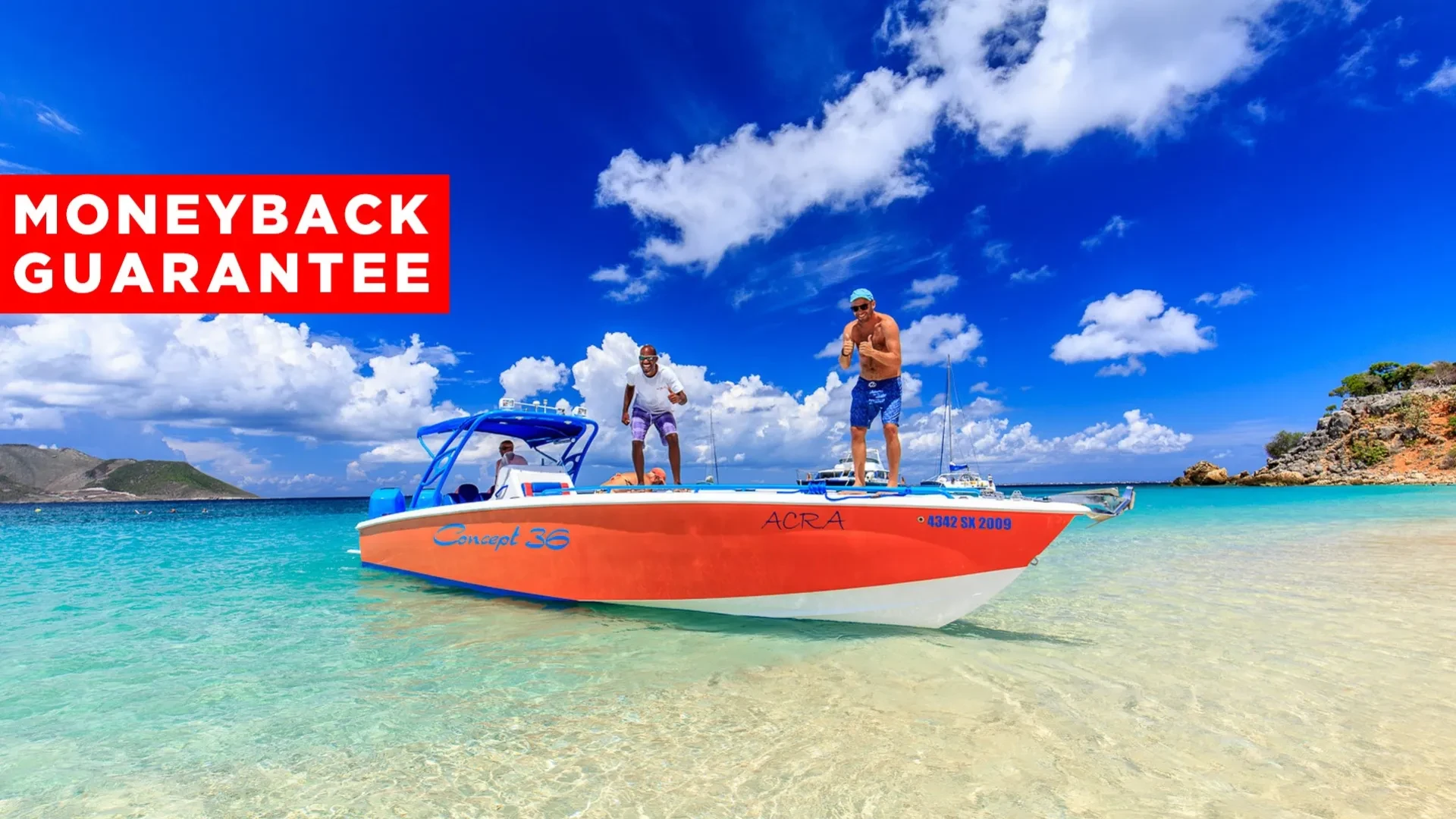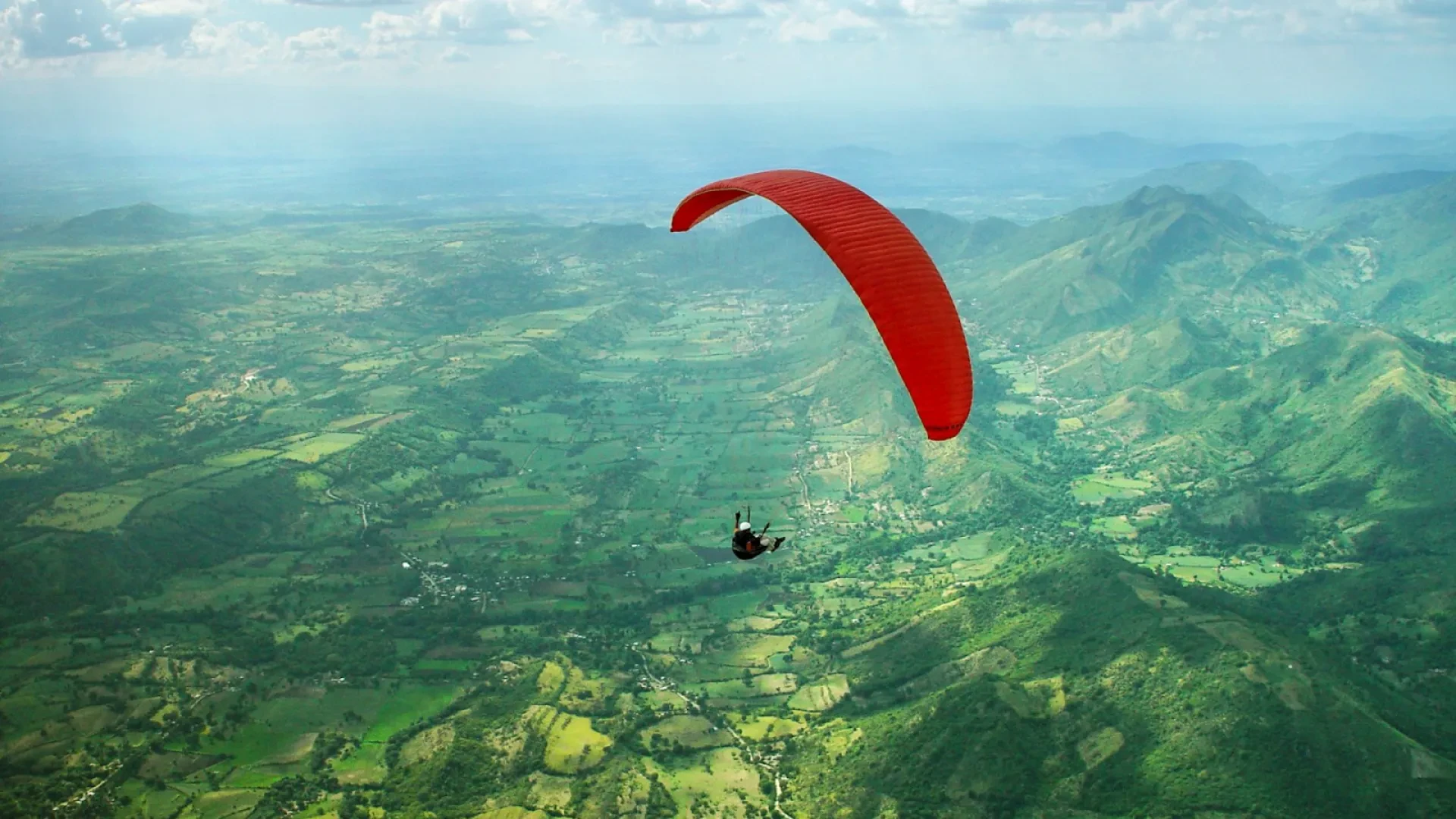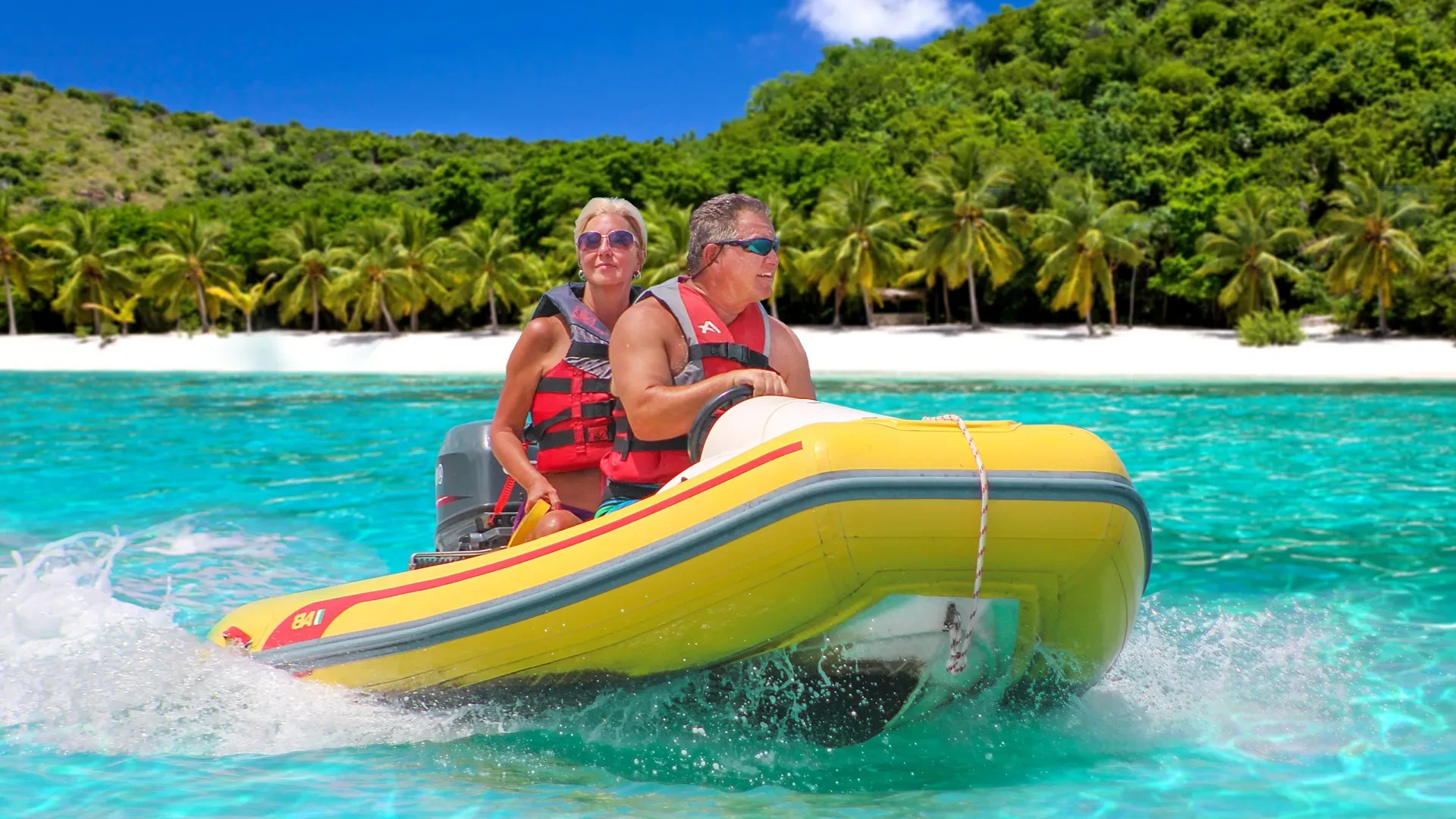Levente
September 04.
Been there. Done that.
Been there. Done that.
September 04.
The Caribbean archipelago, comprising of 1000s of islands, islets, reefs, and cays, stretches over two million square miles from the Gulf of Mexico to the northern coast of South America.
Each island boasts its own distinct identity, shaped by a blend of indigenous heritage, colonial influences, and natural wonders. Whether you're drawn to pristine beaches, vibrant festivals, or rich histories, these Caribbean trivia facts offer a glimpse into the treasure trove of experiences waiting to be explored in 2025.

The Caribbean Islands includes 29 island nations of which 13 are independent, while the rest belong to countries like the United States, United Kingdom, Kingdom of the Netherlands and France.

Spanning over 42,000 square miles, Cuba is larger than all the other Caribbean islands combined. It is also the most populous island, with over 11 million residents.

St. Maarten is divided between France and the Netherlands, making it the smallest island split between two nations. Despite its small size, it has a diverse mix of cultures.

Saba’s Juancho E. Yrausquin Airport features a runway that is only 400 meters (1,312 feet) long. It is so short that only small planes can land there.

Voodoo is everywhere in Haiti, a spiritual system infusing everything from medicine and agriculture to cosmology and arts, and everyday life.

The region experiences just two main seasons: the dry season (December to April) and the wet season (April to December). The wet season brings hurricanes and tropical storms, which can impact the islands significantly.

During the 17th and 18th centuries, famous pirates like Blackbeard, Calico Jack, and Anne Bonny roamed the Caribbean. Some, like Henry Morgan, even became governors after leaving piracy behind.

Located in Morne Trois Pitons National Park, this volcanic lake reaches temperatures of up to 197°F (92°C), making it the second-largest hot spring on Earth.

This 100-acre lake, roughly 250 feet deep, holds approximately 10 million tons of asphalt and has been used for centuries for road paving.

There are many fun facts about the Caribbean Sea. The Horseshoe Reef surrounding Anegada is the fourth-largest barrier reef in the world and protects the island from erosion. The second largest barrier reef is the Mesoamerican Barrier Reef along the coast of Mexico, Guatemala, Belize, and Honduras.

The indigenous Carib tribes were known for their seafaring and warrior skills. The region was named after them when European explorers arrived.

Common words like "hammock," "barbecue," and "canoe" come from the language of the Taino people, who once inhabited much of the Caribbean.

Notable sites include Brimstone Hill Fortress (St. Kitts), Morne Trois Pitons National Park (Dominica), and Old San Juan (Puerto Rico).

Originating from European and African traditions, Caribbean Carnival is celebrated in multiple countries, with Trinidad and Tobago's Carnival being the largest and most extravagant.
While English, Spanish, French, and Dutch are widely spoken, many islands have their own Creole languages, blending African, European, and indigenous elements.

The global pop star Rihanna was born in Saint Michael, Barbados. In 2021, she was named a national hero of her country.

Founded in 1703, Mount Gay Distillery is recognized as the oldest rum distillery still in operation.

These unique beaches get their pink color from crushed coral and microscopic marine organisms.
This unique percussion instrument, made from repurposed oil drums, was developed in the 1930s and is an essential part of Caribbean music.

This giant marine sinkhole, measuring 1,043 feet wide and 407 feet deep, is a UNESCO World Heritage Site and one of the best diving spots in the world.

Studies by NASA have shown that the waters surrounding The Bahamas are among the clearest on Earth, thanks to their white sand and minimal pollution.
The Soufrière Hills Volcano erupted in 1995, covering the capital, Plymouth, in volcanic ash. Today, Plymouth is a ghost town, and the southern part of the island remains an exclusion zone.

Saint Lucia is the only sovereign country in the world named after a woman, Saint Lucy of Syracuse. Ireland was named after a goddess.

The city of Santo Domingo, founded in 1496, is the oldest continuously inhabited European settlement in the Americas.

The Barbados threadsnake is only about 4 inches (10 cm) long, making it one of the smallest snake species on Earth.

Haiti gained independence from France in 1804, becoming the first black-led republic and the second independent nation in the Americas after the U.S.

With its extensive coastline, Cuba boasts over 300 beaches, many of which are considered among the most beautiful in the world.

Grenada is a leading producer of nutmeg, cinnamon, cloves, and ginger, earning it the nickname "Spice Island".

The Blue Iguana, found only in the Cayman Islands, is one of the rarest lizards in the world, with dedicated conservation efforts helping to prevent its extinction. It is one of the longest-living lizards, possibly up to 69 years.
Mosquito Bay in Puerto Rico holds the Guinness World Record for the brightest bioluminescence, caused by tiny microorganisms that glow when disturbed.

Cannabis is illegal in Jamaica, but possession of small amounts was reduced to a petty offense in 2015. In reality, though, you can buy and smoke weed everywhere you go, even on public transport.

Jamaica began exporting bananas in the late 1800s, making it one of the first islands to develop a large-scale banana industry. These Caribbean history facts helped shape the country’s economy.

The Puerto Rico Trench reaches depths of over 27,000 feet (8,380 meters), making it the deepest part of the Atlantic Ocean and a major point of interest for oceanographers.
Several scenes from the "Pirates of the Caribbean" film series were filmed in Wallilabou Bay, making it a popular tourist destination today.

With a population of around 68,000 people, the Cayman Islands is home to over 100,000 registered businesses, making it a major financial hub.

The Zapata Swamp in Cuba hosts the largest breeding colony of flamingos in the Western Hemisphere, with thousands of these elegant birds nesting there.
Due to its southern location, Aruba, Bonaire and Curacao (also called the ABC Islands) are rarely hit by hurricanes, making it one of the safest destinations to visit during hurricane season.

The Dominican Republic leads all other countries with 80 players on active rosters. Venezuela ranks third with 54.

Bonaire is famous for its large flamingo population, which outnumbers the island’s human residents. However, this Caribbean flamingo fun fact will change soon as more people are moving to Bonaire.

The St. Kitts Scenic Railway was built in the early 1900s to transport sugarcane and is now a popular tourist attraction.

Pico Duarte, standing at 10,164 feet (3,098 meters), is the tallest mountain in the Caribbean and a popular hiking destination.

Harrison’s Cave in Barbados is a limestone cave featuring spectacular stalactites, stalagmites, and an underground waterfall.

The Speyside Reef in Tobago features the world’s largest brain coral, measuring over 10 feet (3 meters) in diameter. It is a popular site for scuba divers.

Despite having over 700 islands and 2,400 cays, only about 30 islands in the Bahamas have permanent residents.

With 365 rivers, hot springs, and dense forests, Dominica is a paradise for nature lovers and adventurers.
Jamaica gave the world reggae music, with Bob Marley being its most famous global ambassador.

The Grenada Underwater Sculpture Park, created by artist Jason deCaires Taylor, features life-sized sculptures submerged in the ocean, attracting divers from around the world.

Known for its luxury resorts, yachts, and designer boutiques, St. Barts attracts high-end travelers and celebrities.
The Mount Pelée eruption in 1902 destroyed the city of Saint-Pierre, killing nearly 30,000 people in one of the worst volcanic disasters in history.

The classic Caribbean rum punch recipe follows a simple rhyme: "One of sour, two of sweet, three of strong, four of weak." This traditional drink has been enjoyed for centuries.

The colorful Dutch architecture of Willemstad has earned it a spot on the UNESCO World Heritage list, making it one of the Caribbean’s most picturesque capitals.

Cuba’s 1950s American cars, known as "Yank Tanks", are still in use today due to the U.S. embargo, which prevented new car imports for decades.

With its stunning coastline, Antigua boasts 365 beaches, ranging from secluded coves to popular resort beaches. Many consider Dickenson Bay as Antigua's most beautiful beach.

Built in the early 1800s, the Citadelle Laferrière is a UNESCO World Heritage site and a symbol of Haiti’s independence.

Several Caribbean islands host crab racing competitions, where trained crabs compete in races, providing a fun and unique cultural experience and gambling opportunity.
Jamaica's bobsled team became famous during the 1988 Winter Olympics, inspiring the movie Cool Runnings. The team continues to compete internationally.

Many of the beaches in this island nation feature black volcanic sand due to the active La Soufrière volcano.

Due to constant trade winds, Aruba’s iconic Fofoti trees grow leaning southwest, providing natural direction indicators.

The small greenish-yellow fruit of the Manchineel tree looks like a small apple but a single bite can kill. Even the smoke from burning trees is dangerous and can lead to blindness. Standing beneath the tree during rain will cause blistering of the skin from mere contact with this liquid

Sulphur Springs in Saint Lucia allows visitors to drive right up to the steaming volcanic site, making it a unique geological attraction.

“Liming” means hanging out with friends, relaxing, and sharing stories—an essential part of social life and cultural identity in Trinidad and Tobago.

Sometimes called “sea cows”, these gentle creatures are found in coastal areas of the Caribbean, but face threats from habitat loss and boat collisions.

With its clean air, healthy lifestyle, and pure water, Dominica has one of the highest percentages of people living over 100 years.

"The Flying Dutchman" is considered the world's steepest zipline, offering thrill-seekers a heart-pounding descent from Sentry Hill in St. Maarten.

Iguanas are called “chicken of the tree” in the Caribbean. Their meat contains more protein than chicken, and members of some cultures believe it has medicinal properties.

Princess Juliana International Airport on St. Maarten, Gustaf III Airport on St. Barts, and Juancho E. Yrausquin Airport on Saba are notoriously dangerous due to extremely short runways, proximity to beaches or steep terrain, and challenging approaches that demand precise piloting.

In the Exumas, about 20 pigs and piglets are living their best life, with daily visits from Bahamians and tourists. On the island of Curacao, you can also find a pig family on Porto Marie Beach.
With over 2 million Scoville Heat Units (SHU) - hotter than police-grade pepper spray, the Trinidad moruga scorpion pepper was once considered as the hottest pepper in the world!

Norman Island, a small, uninhabited island in the British Virgin Islands, is said to be the inspiration for Robert Louis Stevenson’s Treasure Island! Legend has it that pirates once buried treasure here, and in the 18th century, hidden loot was actually found in a cave on the island. Some believe there’s still more gold waiting to be discovered in its secret coves and underwater caves!
The Caribbean is far more than just a tropical getaway. It’s a region brimming with culture, history, and natural wonders. From vibrant music and flavorful cuisine to breathtaking landscapes and rich traditions, these 69 fun facts about Caribbean food, music, culture and heritage showcase just a fraction of what makes the Caribbean Islands truly extraordinary.
Whether you’re planning your next trip or reminiscing about past adventures, there’s always something new to discover in this island paradise.
The Caribbean is a fascinating region with a rich history, diverse cultures, and stunning natural beauty. Here are some interesting facts in 2025:
🐠 One of the World’s Largest Coral Reefs – The Mesoamerican Barrier Reef, stretching from Mexico to Honduras, is the second-largest coral reef in the world.
🎭 Carnival is More Than Just a Party – Each island has its own version of Carnival, a mix of African, European, and indigenous traditions, featuring elaborate costumes and soca music.
🥘 Jamaican Jerk Chicken is World-Famous – This spicy, smoky dish originated with the indigenous Taíno people and is now a global favorite.
Here are some Caribbean fun facts for kids that are exciting, easy to understand, and great for sparking curiosity! 🌴🏝️
You can swim with pigs! – In the Bahamas, there’s a famous beach where wild pigs love to swim in the ocean. 🐷🏊
Sea turtles love the Caribbean! – Many baby sea turtles hatch on Caribbean beaches and crawl to the ocean to start their big adventure. 🐢🌊
Carnival is like a giant colorful parade! – In many Caribbean countries, people wear sparkly costumes, dance in the streets, and celebrate with music. 🎭🥳
Ice cream flavors can be wild! – In the Caribbean, you can find ice cream made from tropical fruits like guava, passion fruit, and even avocado! 🍦🍉
The Caribbean has a fascinating history shaped by indigenous civilizations, European colonization, slavery, piracy, and independence movements. Here are some key historical facts:
Indigenous Peoples & Early Civilizations
Colonization & the Slave Trade
Haitian Revolution (1791-1804) – Enslaved people in Haiti, led by Toussaint Louverture, overthrew the French, making Haiti the first independent Black republic in the world.
The Golden Age of Piracy (1600s-1700s)
Independence & Modern History
The Caribbean is known for jerk chicken (Jamaica), roti (Trinidad & Tobago), mofongo (Puerto Rico, Dominican Republic), rice and peas, plantains, seafood dishes, and tropical fruits like mangoes and coconuts. It’s also famous for rum, piña coladas, and Caribbean curries.
In 2025, the Caribbean is famous for its stunning beaches, crystal-clear waters, reggae music, Carnival, pirates, rum, tropical food, and rich history.

Creating this travel magazine takes an insane amount of time and money. If you’ve found it useful and would like to support me in helping other travelers like you, your donation would go a long way. Thanks, you’re the best!
